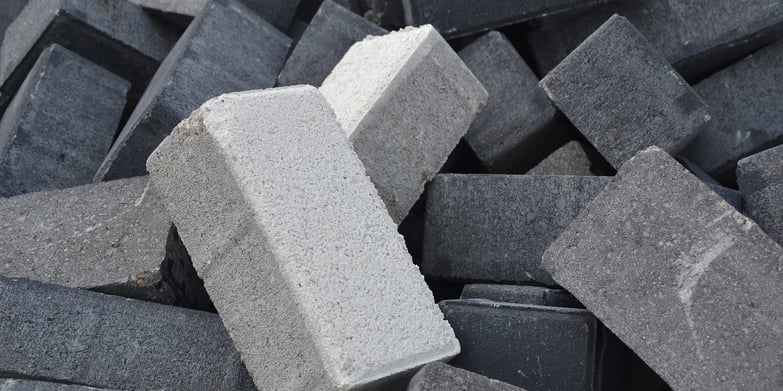
Concrete is a common material used in the construction industry. It is used to build roads, buildings, dams and swimming pools, to name just a few applications. Concrete is a mixture of aggregate (crushed stone), cement, and water. The cement is the admixture that bonds the aggregate together. The most common type of cement is Portland cement. Portland cement was discovered in the 1800’s when a British stonemason, Joseph Aspdin, heated a mixture of limestone and clay, pulverized the substance into a fine powder, and found that mixing the powder with water caused it to harden.
Aspdin called the creation Portland cement since it resembles the stone quarried from the Isle of Portland. The hardening process of the cement and concrete mixture can be accelerated by the addition of various compounds including chlorides, carbonates, silicates, and flu silicates. Calcium chloride (CaCl2) is the most commonly used accelerant. The concrete formed has a high compressive strength due to the tight bonding of the materials but a low tensile strength (stress exerted in force per unit area before strain is observed).
Due to the low tensile strength, steel is often added to reinforce the concrete. In road construction, a grid structure of steel rods known as rebar is used. The steel rebar contains iron, which will be corroded by chlorides, therefore weakening the structure. For this reason, a materials testing lab will closely monitor. The steel rebar contains iron, which will be corroded by chlorides, therefore weakening the structure. For this reason, a materials testing lab will closely monitor content of chloride in concrete.
A testing lab was looking for a replacement chloride ion-selective electrode. The company receives concrete samples from construction sites for chloride testing. The sample is treated prior to titration with silver nitrate (AgNO3). The silver nitrate reacts with chloride to form silver chloride (AgCl), an insoluble precipitate. The electrode signals the end of the titration by providing a sharp voltage spike when all of the chloride reacts with silver nitrate.
Hanna offered the Laboratory Research Grade Two Channel Benchtop pH/mV/ISE Meter - HI5222 with the Chloride Combination Ion Selective Electrode (ISE) - HI4107. The customer found that the HI4107 had a similar design to the probe they used before. This increase in stability is due to the skirted cone reference junction that provides for an increased surface area compared to typical electrodes. The reference junction also is easily flushed and renewed by the plunger design. These features meant that the customer enjoyed faster and more stable readings. The customer appreciated the large log space of 100,000 data points, which allowed lot logging with notes to track multiple samples

That's why we've dedicated our blog as a helpful resource for you to use! Catch up on the latest products, explore industry trends, discover testing tips, learn how to improve results, and more. Got questions? Email sales@hannainst.com.

